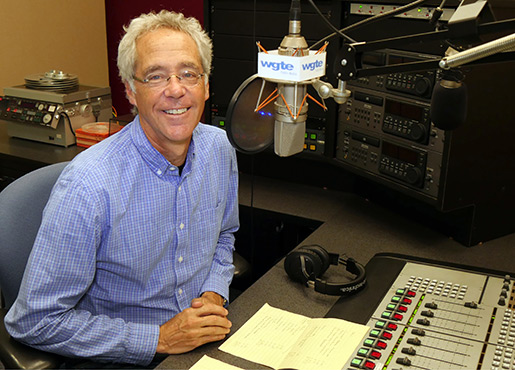
Drumming Out of Time
By Fritz Byers
Yesterday was the birthday of the drummer (and ceaseless innovator) Ed Blackwell (1929). Today is the birthday of both the drummer (and ceaseless incubator) Art Blakey (1919) and the drummer (and ceaseless multi-genre master) Billy Higgins (1936). What a trio!

Let me share a few things you should know about Ed. We can get to Art and Billy next week.
Ed replaced Billy as the drummer in Ornette Coleman’s fabled chordless quartet, as revolutionary an ensemble as has ever played jazz. The quartet’s legendary 1959 stint at the Five Spot in New York City was a cultural cataclysm whose shock waves pervaded not just music, and not just New York. You couldn’t escape them, no matter where you tried to hide. The revered novelist Thomas Pynchon marvelously satirizes the buzz in a brief comic sketch in his (for him) short novel, The Crying of Lot 49. If you listen to it now, Ornette’s early work is still startling in its ingenuity, but his influences have so thoroughly pervaded the music that it’s hard to fathom what all the fuss was about back then. Ornette left those early days far behind, and for the rest of his life he exemplified the spirit of restless, relentless innovation that is one of jazz’s most enduring, and winning, characteristics.
Ed joined Ornette part-way through the Five Spot gig, and he stayed for the two-plus years Ornette remained interested in the quartet, which included the trumpeter Don Cherry and the bassist Charlie Haden. That part of Ed’s work is well-collected in Beauty is a Rare Thing, which gathers all of Ornette’s work on Atlantic, an oeuvre as foundational and enduring as any in the history of the music.
After Ornette time, Ed was a, if not the first-call drummer for free-jazz gatherings. He could do anything on the drum kit, and everyone knew it. But like so many others, he had Ornette deep in his soul by then. So of course he was the drummer in the quartet Old and New Dreams, a tribute band like no other, reflecting and refracting Ornette’s music and his spirit in several recordings. O and ND is Ornette’s quartet, but with Dewey Redman taking the leader’s place on saxophone. The eponymous album on Black Saint (1976) is vastly to be preferred over the same-named 1979 release on ECM. And Playing (1980) captures the group live in Austria. This is one of the recordings that taught me how true is the maxim that, in the end, it all comes down to rhythm. What Ed does behind the horn solos on each of the six tracks is the proof, always mixing rhythmic innovations with rock-solid time-keeping.
Finally for now, three neglected masterworks of Ed’s, I believe the only three recordings he issued as a leader.
In the early 1990s, he formed The Ed Blackwell Project, with the cornetist Graham Haynes, the bassist Mark Helias, and the saxophonist and flutist Carlos Ward. In 1992, the group released its debut, What It Is?, captured in August 1992 at Yoshi’s in Oakland, California, and followed it up two years later with What It Be Like?, derived from the same live date. (Ed passed two months after the recording, on October 7, 1992).
Earlier in 1992, Ed had appeared live with Dewey Redman and the bassist Cameron Brown at the University of Massachusetts – Amherst. Black Saint issued a recording of the concert in 1996, titled Walls-Bridges. Dewey and Cameron are, of course, marvelous. But Ed’s blend of bop-era busyness, African multi-current rhythms, and free-jazz liberties make this a special recording, not to be missed.
As for the 1992 live recordings of the Project: What it is? And what it be like? Fair questions, both. We can’t know what answers Ed intended them to elicit, but we have the music, which is protean, challenging, and beautiful. Carlos provided nearly all of the compositions, and the intertwining of his instruments (he is one of jazz’s great flutists) with Graham’s cornet (which unavoidably shows the influence of Don Cherry’s pocket-trumpet playing with Ornette thirty years earlier) is both sinuous and sharp.
Don Cherry joins the Project on the final track of What It Be Like, Carlos’s composition “Lito, Parts 1, 2 & 3.” His playing, as always, is both logical and endlessly surprising. But, suitably, the piece, which concludes the recording and thus is Ed’s last work on record, winds down with Ed’s drumming beautifully showcased. It is the final, and a very nearly pure, example of Ed’s ability to play polyrhythms on surprising elements of the drum set, while maintaining the staunchest metric precision. You have to just listen, and not spend too much wondering how he manages all that with just two hands and two feet. Otherwise you’ll go nuts.
- Home
- Schedules
- TV
- TV
- Local TV Programs
- Business | Life 360 with Kristi K.
- Toledo Stories
- To The Point with Doni Miller
- Listening with Keith Burris
- Ideas & Insights
- WGTE Presents
- BL360: Northwest Ohio Innovation Consortium
- Magic of the Old West End
- Freedom Means Never Surrender
- I&I: The Random Factor
- FF: National Cherry Festival
- TTP: Moms Demand Action For Gun Sense in America
- Watch Live
- Radio
- Education
- Community
- Support
- About
- Donate
- Watch Live



